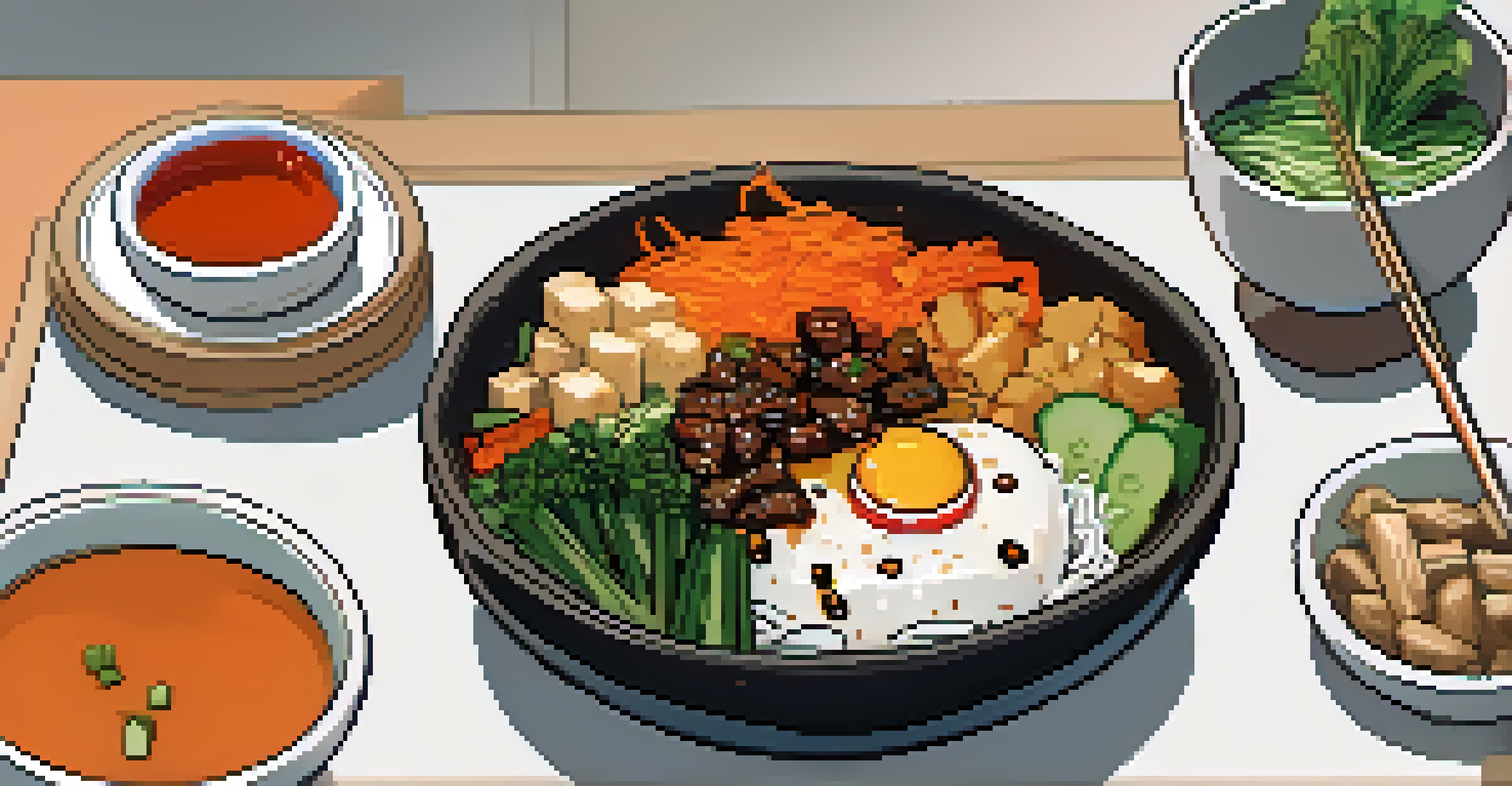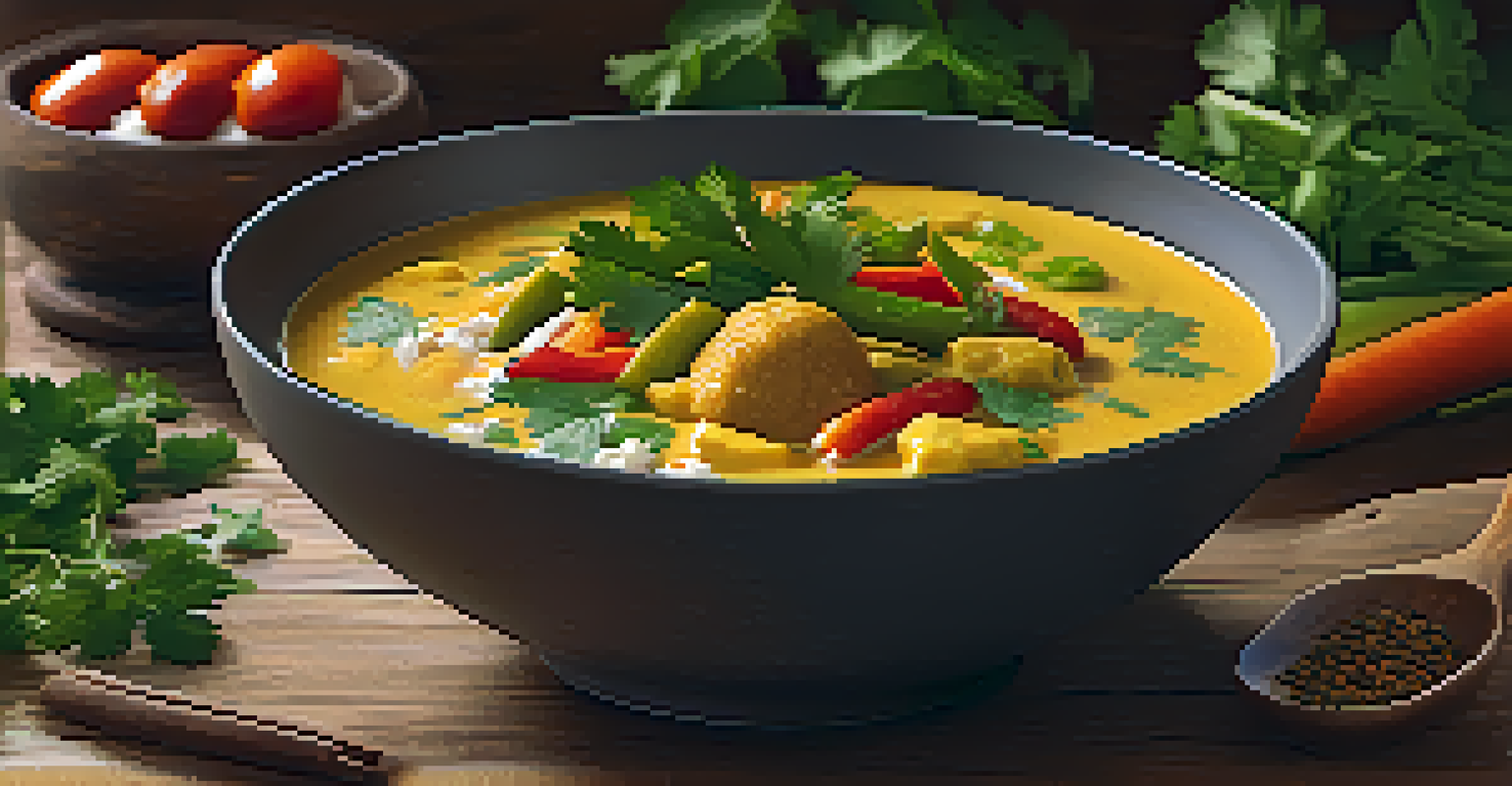Integrating Veganism into Traditional Asian Cooking Styles

Understanding Veganism in Asian Culture
Veganism, while often associated with Western diets, has deep roots in many Asian cultures. Countries like India and parts of Southeast Asia have long embraced plant-based diets, influenced by religious and philosophical beliefs. This makes integrating veganism into traditional Asian cooking a harmonious endeavor rather than a radical change.
The food you eat can either be the safest and most powerful form of medicine or the slowest form of poison.
Incorporating veganism into traditional Asian cooking styles can be an exciting challenge, as many staple ingredients are naturally plant-based. For instance, rice, vegetables, and legumes form the backbone of many Asian dishes. By focusing on these ingredients, cooks can create meals that are both authentic and vegan-friendly.
Moreover, the practice of using spices and herbs in Asian cuisines enhances the flavors of vegan dishes, making them just as satisfying as their meat-based counterparts. Think of a rich curry or a fragrant stir-fry, where the absence of meat is hardly noticed amidst the vibrant blend of tastes.
Substituting Ingredients Without Losing Flavor
One of the key concerns when making traditional Asian dishes vegan is how to replace animal products without sacrificing flavor. Fortunately, there are plenty of plant-based alternatives that can maintain, if not enhance, the taste of beloved recipes. For instance, using tofu or tempeh in place of meat can add protein while absorbing the dish's flavors beautifully.

Another great substitution is coconut milk, which can provide the creamy richness often contributed by dairy in curries and soups. When you simmer vegetables in coconut milk, they take on a luscious texture that feels indulgent and comforting. Plus, it’s a staple in many Southeast Asian dishes, making it a natural fit.
Veganism Roots in Asian Cultures
Many Asian cultures have long embraced plant-based diets, making veganism a natural fit in traditional cooking.
Don't forget about umami, the savory taste that gives depth to many Asian cuisines. Ingredients like mushrooms, soy sauce, and miso paste are all vegan and can easily elevate a dish's flavor profile, ensuring that your vegan meals are just as satisfying as traditional ones.
Exploring Regional Vegan Dishes Across Asia
Each region in Asia offers unique vegan dishes that can inspire your cooking. For example, in India, dishes like chana masala (spiced chickpeas) and palak paneer (spinach and tofu) are not just vegan but also packed with flavor and nutrients. These dishes highlight the versatility of legumes and greens, making them perfect for anyone looking to adopt a plant-based diet.
Let food be thy medicine and medicine be thy food.
Similarly, in Japan, you can enjoy a delicious bowl of vegan ramen by using vegetable broth infused with kombu (seaweed) and miso. Load it up with fresh vegetables and tofu, and you've got a hearty meal that stays true to traditional flavors while being completely plant-based.
In Thailand, consider whipping up a vegan pad Thai using rice noodles, tofu, bean sprouts, and a zesty tamarind sauce. This dish exemplifies how you can maintain the essence of a beloved recipe while making it accessible to vegans. Exploring these regional dishes can make your culinary journey both exciting and diverse.
The Role of Spices in Vegan Asian Cooking
Spices play a pivotal role in Asian cooking, often transforming simple ingredients into extraordinary dishes. When creating vegan meals, spices can compensate for the absence of meat by adding depth and complexity. For instance, a mix of cumin, coriander, and turmeric can create a robust flavor base for any vegetable dish.
Herbs and aromatics like garlic, ginger, and scallions are also essential in Asian cuisines. These ingredients add freshness and brightness to vegan recipes, making them more appealing. A sprinkle of fresh cilantro or basil can elevate your dish, providing an aromatic finish that excites the palate.
Flavorful Substitutions for Vegan Dishes
Using ingredients like tofu, coconut milk, and umami-rich products can enhance the flavors of traditional Asian recipes while keeping them vegan.
Don't shy away from experimenting with spice blends, either! Combining different spices can lead to unique flavors that reflect the diversity of Asian cooking. This exploration not only enhances your vegan meals but also deepens your appreciation for the culinary traditions of the region.
Cooking Techniques That Enhance Vegan Dishes
Traditional Asian cooking techniques can significantly enhance the flavors and textures of vegan dishes. Techniques like stir-frying, steaming, and braising can bring out the natural sweetness of vegetables while retaining their nutrients. For instance, a quick stir-fry with vibrant veggies and tofu can create a colorful, nutrient-dense meal in just minutes.
Steaming is another technique that preserves the integrity of ingredients, especially for greens and dumplings. When you steam vegetables, they maintain their bright colors and crisp textures, making them visually appealing and healthy. This method is perfect for preparing light and refreshing side dishes to accompany your main course.
Braising, often used for meat dishes, can also work wonders with vegetables and plant proteins. Slow-cooking ingredients in a flavorful broth allows them to absorb rich tastes and develop a tender texture, creating a satisfying dish that feels indulgent yet wholesome.
Veganizing Iconic Asian Dishes
Many iconic Asian dishes can be easily veganized without losing their essence. For example, consider the classic Vietnamese pho, which can be made using a fragrant vegetable broth paired with rice noodles and an array of fresh herbs and vegetables. This transformation not only keeps the dish authentic but also highlights the vibrant flavors of plant-based ingredients.
Similarly, Korean bibimbap, typically served with meat and an egg, can be adapted by using marinated tofu and a dollop of spicy gochujang sauce. The colorful array of vegetables still shines through, ensuring that this rice bowl is as colorful and flavorful as its traditional counterpart.
Health and Sustainability Benefits
Integrating veganism into Asian cooking promotes health and sustainability by encouraging the use of fresh, whole ingredients.
By embracing creativity, you can find ways to adapt various Asian dishes to fit a vegan lifestyle. This not only preserves cultural integrity but also invites more people to explore the rich tapestry of flavors inherent in Asian cuisine.
Benefits of Integrating Veganism into Asian Cooking
Integrating veganism into Asian cooking not only supports a plant-based lifestyle but also promotes health and sustainability. Many traditional Asian diets are already rich in vegetables, grains, and legumes, making it easier to transition to a vegan diet without feeling deprived. Plus, the focus on fresh, whole ingredients can lead to numerous health benefits.
Additionally, veganism encourages creativity in the kitchen. It challenges cooks to think outside the box and experiment with new ingredients and techniques. This creativity can lead to delightful discoveries, resulting in dishes that are not only delicious but also unique.

Lastly, adopting vegan practices can contribute to global sustainability efforts. By reducing reliance on animal products, we can help lessen the environmental impact of food production. Integrating veganism into Asian cooking is not just a culinary adventure; it’s a step toward a healthier planet.